Dogs experience anxiety and stress just like humans. As a dog owner, being able to recognize signs of anxiety in your dog and help them relax is an important skill. This guide covers everything you need to know about soothing a stressed out pup.
Recognizing Anxiety in Dogs
The first step is noticing when your dog is feeling anxious or overwhelmed. Dogs communicate stress through physical signs and behaviors such as:
Physical signs:
- Panting
- Trembling
- Furrowed brows
- Yawning
- Lip licking
- Ears back
- Tail down
Behaviors:
- Pacing
- Whining
- Barking
- Hiding
- Destructiveness
- Aggression
- Excessive grooming
- Clinging to owner
Pay close attention to your dog’s body language and actions to identify times of stress.
Techniques to Calm an Anxious Dog
Once you notice your dog is feeling stressed or anxious, you can start using techniques to relax them and turn their panicked state to peaceful calm. Here are some of the best methods for soothing dogs:
Use Distractions
One way to snap a dog out of anxious behavior is providing distractions that engage them mentally and physically. Try toys, tasty treats, or games to shift their focus. Useful distractions include:
- Food puzzles like snuffle mats or Kongs
- Chew toys
- Fetch
- Tug-of-war
- Training games like hide-and-seek with treats
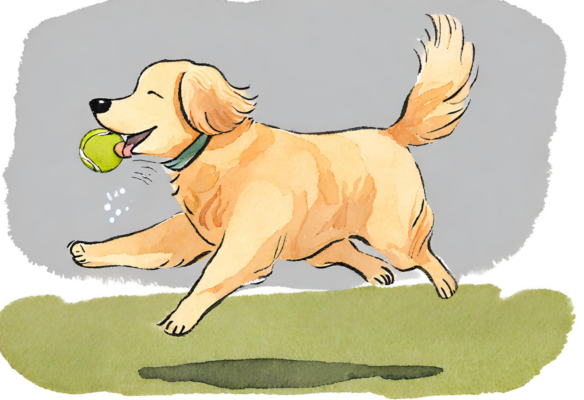
Redirect With Commands
If your dog is responding to verbal cues, simple obedience commands can redirect their attention and energy in a positive way. Use brief directional commands like “sit”, “down”, “stay”, “watch me”, or “touch.” Have tasty treats on hand to reward and reinforce these commands.

Create a Calm Atmosphere
Helping your dog relax is often about controlling their environment. Try to create a soothing atmosphere by:
- Playing calming music
- Diffusing calming essential oils like lavender or chamomile
- Eliminating loud sounds as much as possible
- Closing blinds to minimize outdoor activity viewing
- Providing comfortable resting spots away from triggers
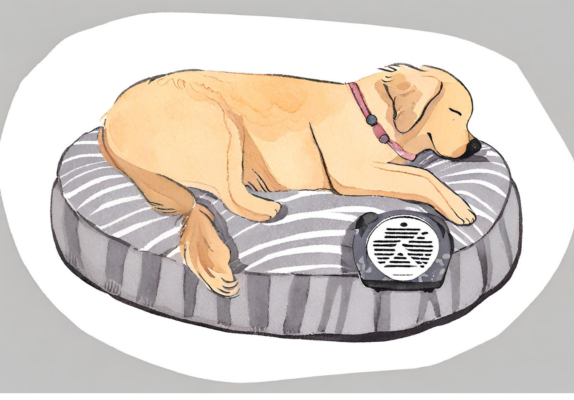
Use Appeasing Pheromones
Specialized products contain dog-appealing pheromone (DAP) analogs that mimic natural calming hormones released by nursing dams. Synthetic pheromones have proven calming effects. Delivery methods include:
- Collars
- Plug-in diffusers
- Wipes
- Sprays
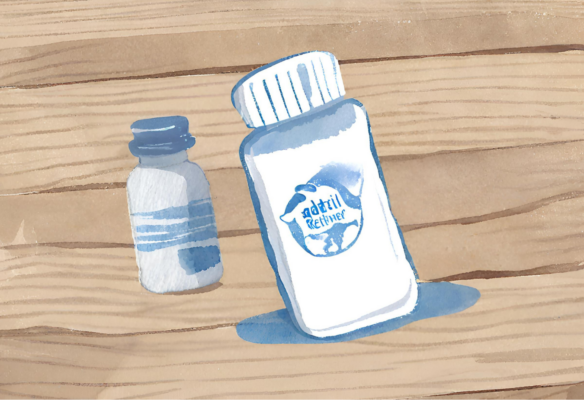
These pheromones influence dog behavior and ease anxiety without sedation when used regularly. They are even useful for calming puppies.
Try Anxiety Vests
These snug vests exert gentle, constant pressure that has a soothing effect on many dogs similar to swaddling an infant. The compression can:
- Lower heart rate
- Reduce agitation
- Make dogs feel secure
- Limit excessive movement
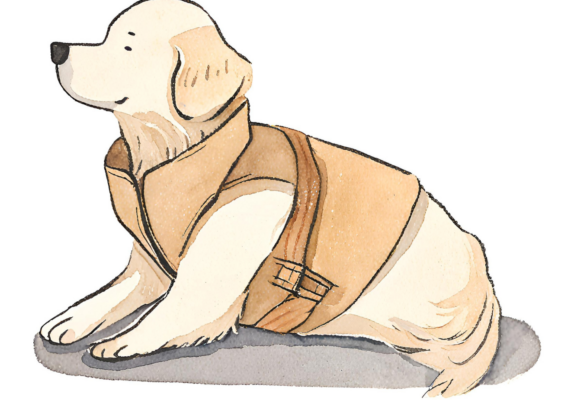
Anxiety vests work best combined with other calming techniques like medications recommended by your veterinarian.
Give Massages
Giving your dog a massage can help relax muscle tension and relieve anxiety. Use gentle strokes on areas like the neck, shoulders, back, and hips while avoiding sensitive spots like the lower back, tail, legs, and paws. Speak in soothing tones and watch your dog’s reaction. Deep pressure may be calming, but cease any massage that seems to cause more agitation.
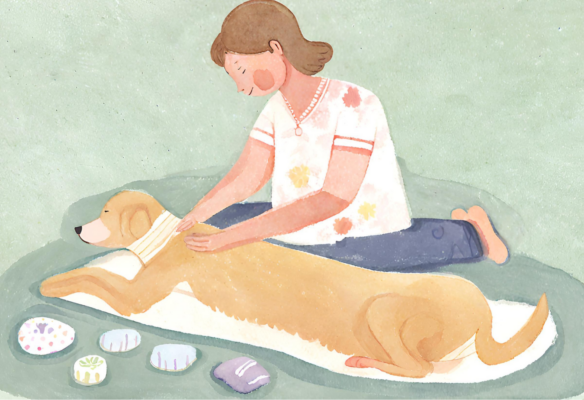
Encourage Rest
Helping your dog rest or nap is another way to calm them down. Try settling them in a cozy crate, bed, or room away from the stressors. Sit with them and offer gentle strokes if they seem receptive. You can also place a lightly weighted blanket over their body which has an anxiety-reducing effect for some dogs.
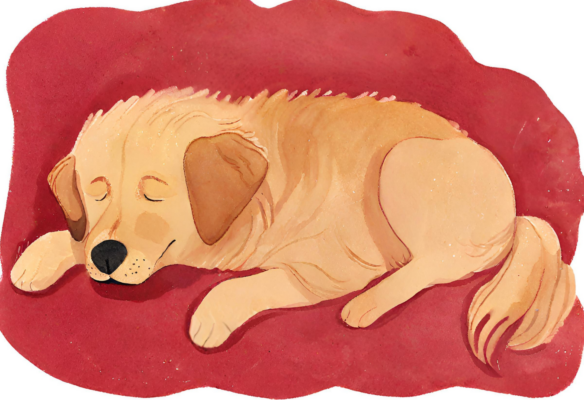
Best Calming Products for Anxious Dogs
There are endless products on the market claiming to calm dogs. With so many choices, it’s tough to know what really works. After extensive research, here are some of the top-rated calming aids for dogs with anxiety:
Adaptil Calming Products – This line uses patented synthetic dog pheromones clinically proven to relieve stress. They are available as sprays, collars, diffusers, and wipes.
ThunderShirt Anxiety Jacket – These snug shirts provide gentle constant pressure that has a calming effect on most dogs. Easy to put on and take off.
PetHonesty Hemp Calming Treats – These all-natural soft chews contain hemp powder and L-tryptophan to relieve anxiety without sedation. Salmon flavored.
Zesty Paws Calming Bites – These chicken-flavored soft chews include melatonin, L-tryptophan, thiamine, and hemp seed powder to reduce stress and induce relaxation.
MixJoy Calming Bed – This round donut bed is ideal for anxious dogs who like to burrow. The cushioned sides provide a sense of security and warmth.
Pet Remedy Calming Spray – This clinically proven formula uses Valerian essential oil and other natural ingredients to reduce stress and induce calmness.
Pet Acoustics Pet Tunes Speaker – This speaker plays clinically tested music proven to reduce barking and calm anxious pets. Can be set on a timer or controlled remotely.
Using Calming Techniques for Common Triggers
Tailor the calming techniques above to your dog’s unique stress triggers:
Loud noises: Use pheromone products, calming treats, thunder vests, white noise machines, or music to muffle sounds. Provide a secure space with blankets.
Separation: Give puzzles, calming treats, and pheromone diffusers before departures. Gradually increase alone time.
New environments: Bring familiar items like blankets or toys to new places. Introduce slowly and provide chances to retreat if overwhelmed.
Travel: Use crates, harnesses, calming music/treats/toys, and take regular breaks. Practice short trips first.
Vet visits: Give calming treats at home beforehand. Bring treats and toys to appointments and request minimal restraint. Ask for quiet exam rooms.
Guests: Provide a safe space for your dog to retreat when guests arrive. Use commands, treats, or toys to redirect attention from visitors. Introduce new people gradually.
Crowds: Avoid overwhelming crowded events at first. Bring calming aids in public. Watch for stress signals and retreat to quieter areas as needed. Attend less busy times if possible.
Grooming: Use pheromone products before appointments. Request minimal restraint. Introduce tools/procedures slowly in short positive sessions.
Changes: Gradually introduce impending changes over time. Maintain routines and use calming aids to help dogs adjust.
When to Call the Veterinarian
While the calming strategies here can help dogs relax, anxiety that interferes with a dog’s daily function results in harm or persists despite your best efforts warrants medical intervention. Contact your veterinarian if your dog displays:
- Aggression that puts people or pets at risk
- Depression
- Extreme destruction, vocalization or house soiling when alone
- Other compulsive behaviors
- Heart abnormalities like arrhythmias
- Elimination issues like diarrhea
- Neurologic abnormalities like tremors or seizures
- Changes in appetite
- Hair loss on the body from over-grooming
- Injuries from attempts to escape
Medications, supplements, pheromones, and referrals to veterinary behaviorists are options for dogs with severe anxiety that eclipses their quality of life. Never hesitate to reach out to your vet for help regarding serious behavioral issues.
Please do check out: 15 Most Easily Trainable Dog Breed
Source:


